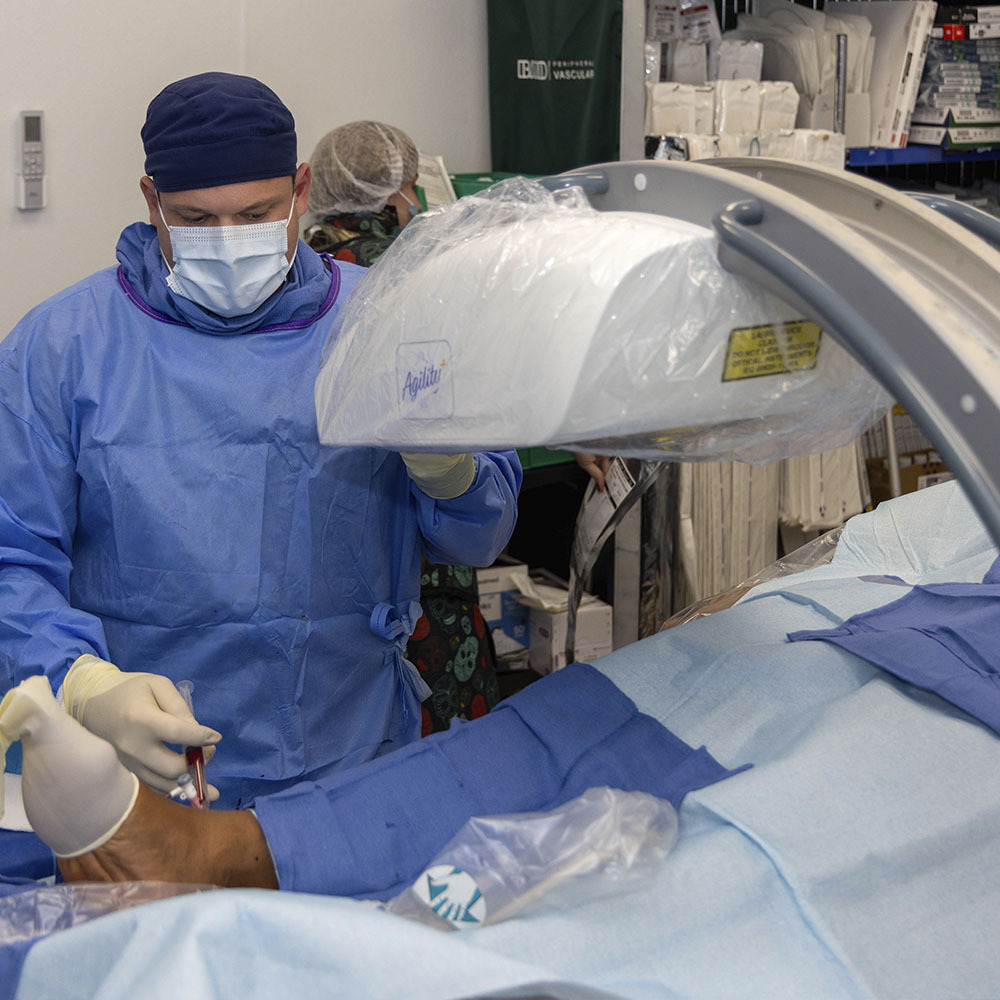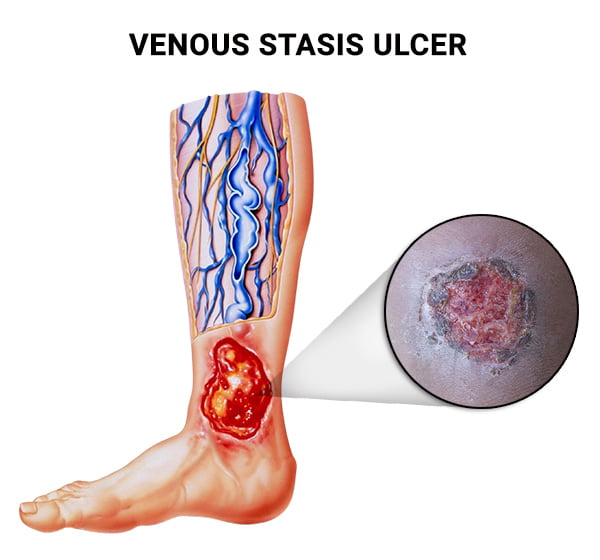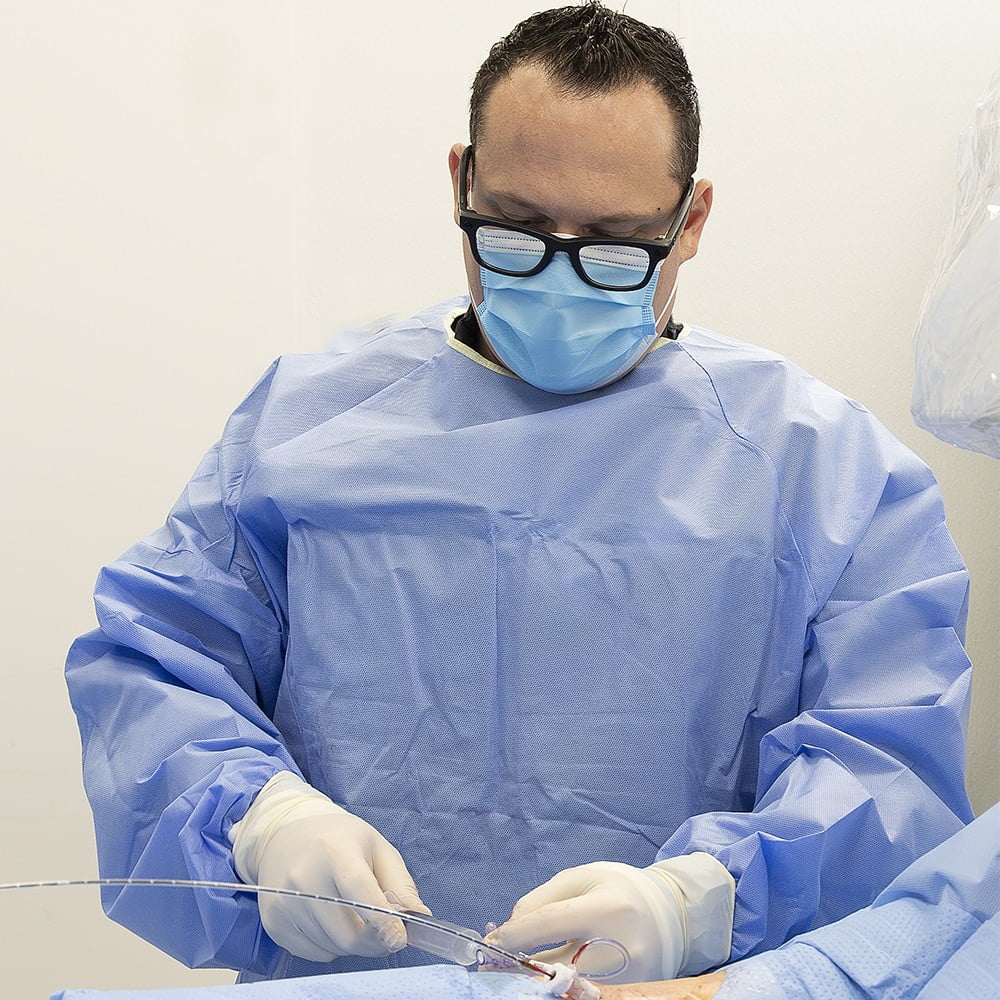
Venous stasis wounds appear as open wounds on your lower legs that don’t seem to heal quickly. Caused by circulation problems, these issues require venous stasis dermatitis treatment, or if advanced, venous stasis ulcer treatment. In Brooklyn, you can get both at Astra Vein & Fibroid Treatment Center. These wounds only get worse if left untreated. Call today to schedule a consultation and get rid of your painful skin ulcers.
Venous stasis wounds, also known as venous stasis ulcers or just skin ulcers, are open sores that develop due to poor blood circulation. They most often appear in your legs, near your ankles. Slow healing, these sores are often preceded by a skin condition called venous stasis dermatitis, which is caused by inflammation from underlying venous problems.
With effective venous stasis ulcer treatment, Astra Vein & Fibroid Treatment Center in New York City is a leading vein practice. Its experienced team is led by Dr. George Bolotin, a board certified interventional radiologist and vein specialist in Brooklyn. The center offers the most advanced solutions for vein problems, including minimally invasive procedures. Visit the Brooklyn office for an evaluation and personalized treatment.
 Venous stasis ulcers are caused by chronic venous insufficiency in your legs. The condition occurs where you have poor blood flow, leaving blood to pool in the vein. When the vein is weakened from pooling blood, it causes hypertension, triggering inflammation in the surrounding tissues, including your skin.
Venous stasis ulcers are caused by chronic venous insufficiency in your legs. The condition occurs where you have poor blood flow, leaving blood to pool in the vein. When the vein is weakened from pooling blood, it causes hypertension, triggering inflammation in the surrounding tissues, including your skin.
This inflammation causes skin dermatitis, which can develop into open sores, typically around or above your ankles. You may be prone to venous stasis dermatitis and ulcers because of:

 Venous stasis dermatitis usually appears as red, itchy and scaly skin on your lower legs. It feels as if your skin has tightened, becoming less flexible. You may also see purplish or brownish discoloration caused by the underlying vein problems.
Venous stasis dermatitis usually appears as red, itchy and scaly skin on your lower legs. It feels as if your skin has tightened, becoming less flexible. You may also see purplish or brownish discoloration caused by the underlying vein problems.
The symptoms include:
An early diagnosis and venous stasis dermatitis treatment stalls the progression of the condition, which can become a venous stasis ulcer if left untreated. Your wisest course of action is to visit a vascular specialist in Brooklyn as soon as you spot any symptoms.
A venous stasis ulcer presents as a shallow, open sore that just doesn’t seem to heal. Sometimes, the sore gets infected, causing pain.
Other signs that define venous stasis ulcers include:
Without effective venous stasis ulcer treatment, these wounds can lead to chronic ulceration. Consult a vein specialist in Brooklyn like Dr. Bolotin at Astra Vein & Fibroid Treatment Center. Get an accurate diagnosis and effective treatment to prevent complications that are harder and costlier to treat.
Several venous stasis ulcer treatment options focus on healing the wounds Other options deal with the underlying problem of venous insufficiency.
Treatment options include:
Dr. Bolotin is a wound care specialist who uses the latest techniques, such as hydrocolloid dressings, to keep your wounds clean and promote faster healing. At Astra Vein & Fibroid Treatment Center in Brooklyn, your recommended treatment fits the severity of your condition, aligning to your overall health and lifestyle.
Astra Vein & Fibroid Treatment Center partners with many major health insurance providers to make your vein treatment accessible and affordable. The staff at this facility provides streamlined insurance processing to ensure you receive the treatment you need as quickly as possible with minimal hassle.
Several of the health insurance providers they accept include:
Using your health insurance reduces your out-of-pocket expenses, so you can access advanced care without an undue financial burden. To avoid costly treatments, have your open leg wounds diagnosed and treated as soon as possible. Then visit a Brooklyn vein center that takes your insurance.
Expect a streamlined process that’s focused on an accurate diagnosis, personalized treatment and quick recovery. Astra Vein & Fibroid Treatment Center delivers a patient-centered approach to effective venous stasis dermatitis treatment and venous stasis ulcer treatment.
Reasons to visit this practice include:
Dr. Bolotin and his team delivers long-term relief from venous stasis issues. Contact Astra Vein & Fibroid Treatment Center today to schedule a consultation for restored health and mobility. When you need venous stasis dermatitis treatment or venous stasis ulcer treatment, trust these experts. Don’t suffer needlessly when you get the diagnosis and treatment you need.
Vein & Vascular Medical Care
4209 Ave U, Suite A.
Brooklyn, NY 11234
(347) 934-9068
Vein & Vascular Medical Care
869 E Tremont Ave
Bronx, NY 10460
(929) 447-4563